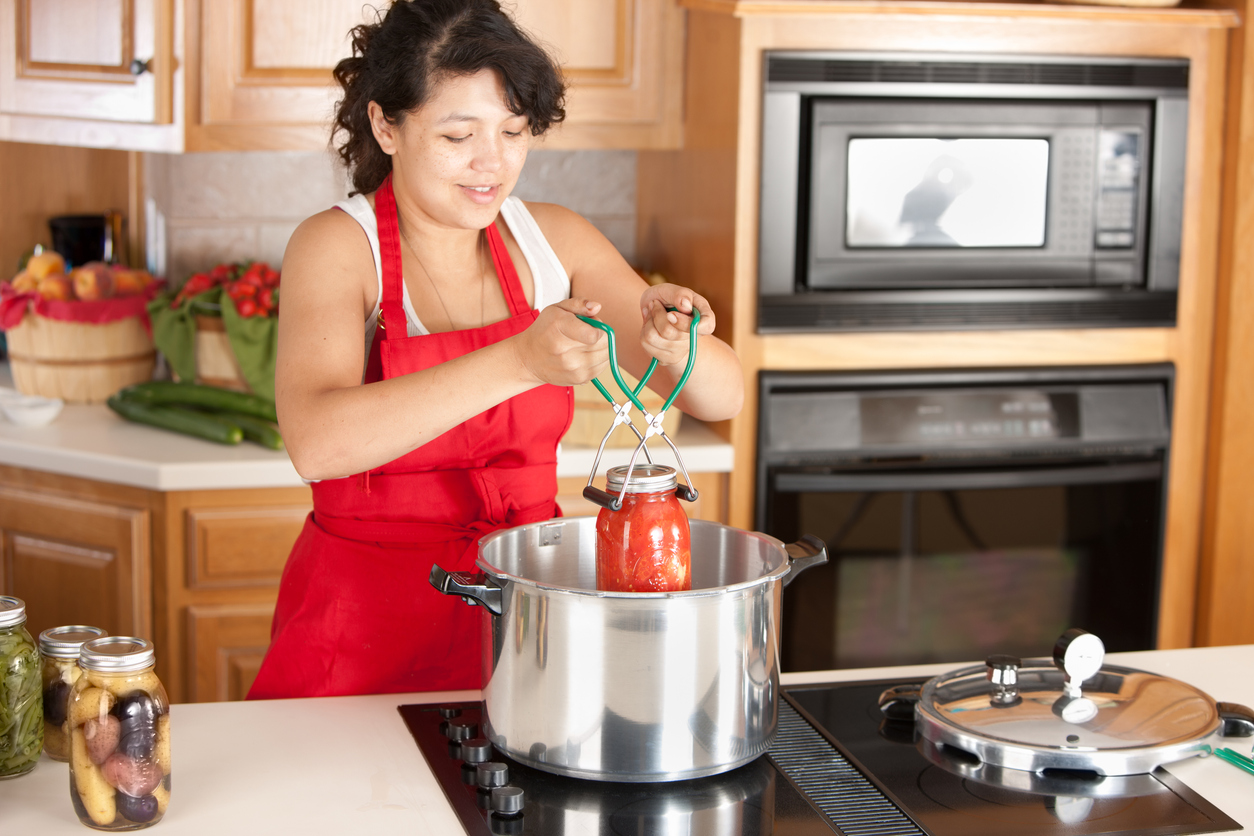Losing power always makes me think of orange sherbet. It was 1991, and Hurricane Bob had wiped out our electricity and all my mother was worried about was how we needed to eat all the food in the refrigerator before it went bad. There I was, sitting on the couch next to my grandmother, each of us with a spoon shoveling orange sherbet into our faces. Whether you are prepping for storm season, or just like the peace of mind of diversifying your food storage options, storing food without refrigeration is a useful skill.
There are several methods for storing food without refrigeration and each method comes with its own set of instructions and best practices. Here are some food preservation tips for each kind of method, and if you haven’t watched it already, here’s my video guide on pickling, and also on the best veggies you can preserve.
Discover 7 top tips for growing, harvesting, and enjoying tomatoes from your home garden—when you access the FREE guide The Best Way to Grow Tomatoes, right now!
Canning tips
1. Use the right supplies. When storing food without refrigeration via the canning method, only use cans, lids, and materials that are intended for canning vegetables. Be sure they are clean and sterile before and during use.
2. Read your canning instructions carefully. Follow instructions that come with your canning tools. Use proven recipes and don’t deviate from them.
3. Use additives like lemon juice or citric acid. Adding lemon juice or citric acid will increase the acidity in your jars which will make them safer for longer-term storage. As previously stated, you should always follow reputable canning recipes.
Fermenting tips
4. Use filtered, non-chlorinated water. Depending on your recipe you may need to use non-chlorinated water or whey.
5. Keep all vegetables submerged under the brine. It’s important to keep all vegetables submerged in your brining solution in order to safely ferment each piece of food.
6. Use a digital scale. Using a digital scale helps measure ingredients more carefully which can affect the success of your fermentation. Measuring your salt and ingredients precisely gives you peace of mind knowing that your salinity is correct.
Storage cellar tips
7. Clean out your storage area thoroughly at least once a year. When storing food without refrigeration in a root cellar, sanitize your space regularly to make sure mold and mildew don’t form. Protect your stored produce by making sure the shelves, baskets, and bins are free from bacteria and debris.
8. Ensure good ventilation. Some vegetables and fruit give off ethylene gas that can cause other produce to spoil if not enough fresh air circulates throughout the cellar.
9. Keep light to a minimum. If your root cellar has a window, cover it to prevent sunlight from causing sprouting of your root vegetables.
Dehydration tips
10. Be sure your fruits and veggies are fully dry. Dehydrating is a great method for storing food without refrigeration. Don’t remove fruits and vegetables from the dehydrator until they are fully dry. Dehydrated produce should be hard and crunchy and not soft and spongy. The goal is to remove at least 95% of the moisture.
11. Prepare your produce effectively. Wash produce with an antibacterial vegetable wash to remove any bacteria or chemicals from the exterior of your produce. With fruit like bananas and apples, spray lemon juice on the slices before dehydrating to prevent browning.
12. Pay attention to your temperature. Different types of produce require different temperatures and drying times. Don’t think that you can speed up the dehydration process by raising the temperature. You may end up cooking the vegetables or fruits which will compromise the texture and long-term storage.
General storage tips
13. Don’t wash produce that is being stored whole. When storing whole vegetables like root vegetables, squash, and gourds, don’t wash the exterior. Washing vegetables like these will introduce moisture which can speed up rot and encourage mildew.
14. No airtight containers. Airtight containers prevent air from circulating which can contribute to early rot.
15. Remove rotten fruits and veggies. Check on your fruits and vegetables regularly and remove fruits and vegetables that show signs of rot.
Discover 7 top tips for growing, harvesting, and enjoying tomatoes from your home garden—when you access the FREE guide The Best Way to Grow Tomatoes, right now!
What tips do you have for storing food without refrigeration? Let me know your tips in the comments!
